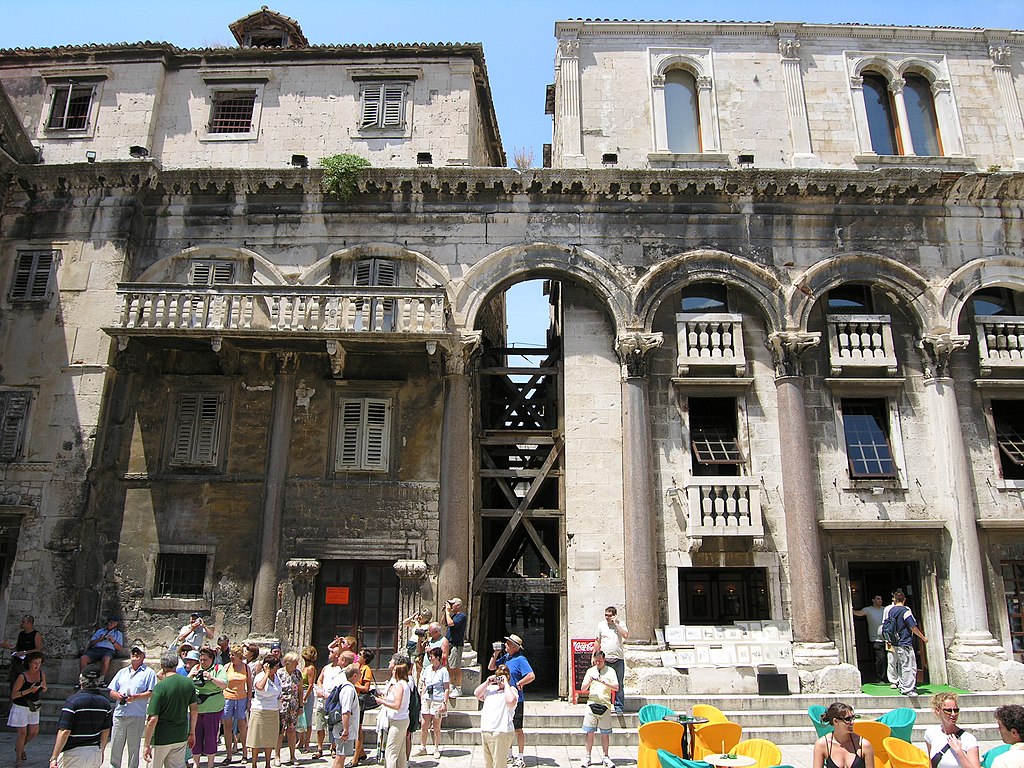Diocletian’s Palace stands as an architectural marvel and a testament to the grandeur of the Roman Empire. Situated in the heart of Split, Croatia, this ancient palace is not merely a historical relic but a living, breathing testament to over 1,700 years of history and culture.
Built between the late 3rd and early 4th centuries AD, Diocletian’s Palace was commissioned by the Roman Emperor Diocletian as his retirement residence. Designed as a fortress-palace complex, it occupies an area of approximately 7 acres and is surrounded by imposing walls and towers. The palace was constructed using high-quality limestone and marble imported from nearby quarries, showcasing the wealth and power of the Roman Empire at the time.
The palace’s architecture reflects a blend of Roman, Hellenistic, and Byzantine influences, with its intricate columns, arches, and vaulted ceilings. The layout of the palace is organized around two main perpendicular streets, the Cardo and Decumanus, which intersect at the Peristyle, a grand open courtyard surrounded by colonnades and adorned with statues and fountains.
One of the most iconic features of Diocletian’s Palace is the Cathedral of St. Domnius, formerly the mausoleum of Emperor Diocletian. This ancient structure, consecrated as a Christian cathedral in the 7th century, boasts a magnificent bell tower that offers panoramic views of Split and the surrounding area.
Another highlight of the palace is the Temple of Jupiter, a Roman temple dedicated to the chief god of the Roman pantheon. Today, the temple serves as a baptistery, with its original columns and marble decorations still intact.
Throughout its long history, Diocletian’s Palace has undergone numerous transformations and adaptations, with various rulers and civilizations leaving their mark on the complex. Over time, the palace evolved from a fortified imperial residence into a bustling urban center, with houses, shops, and cafes filling its labyrinthine streets.
Today, Diocletian’s Palace is a UNESCO World Heritage Site and one of Croatia’s most popular tourist attractions. Visitors can explore its ancient walls and corridors, wander through its narrow streets, and marvel at its stunning architecture. The palace also hosts a variety of cultural events and performances, including concerts, theater productions, and art exhibitions, adding to its vibrant atmosphere and allure.
Diocletian’s Palace stands as a living testament to the ingenuity and craftsmanship of the ancient world, a timeless monument to the grandeur of the Roman Empire and a symbol of Split’s rich history and cultural heritage.



